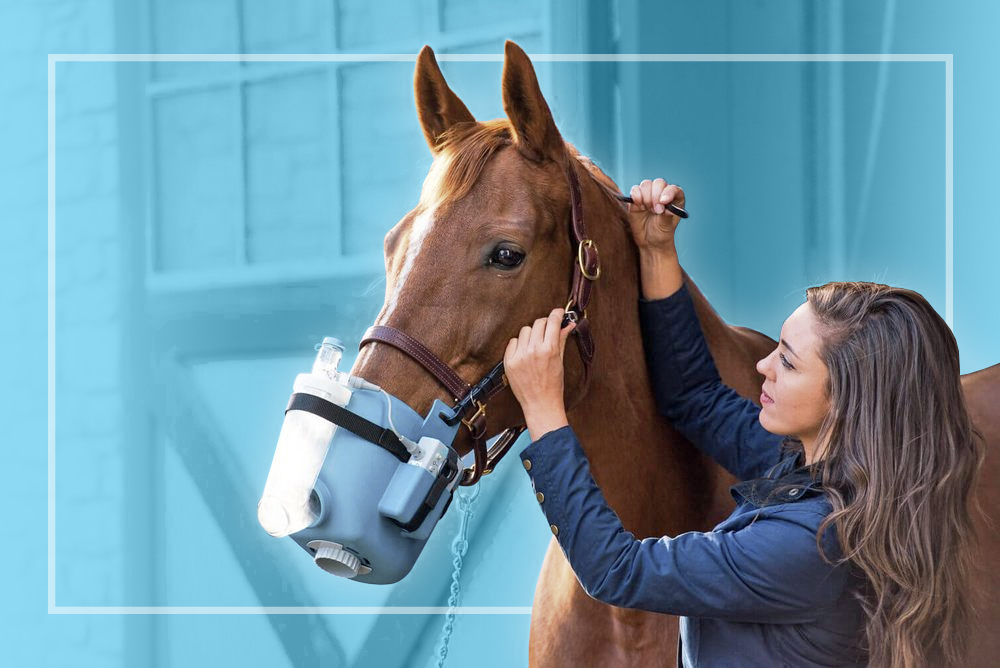By Stephanie Davis, DVM
Owner & Sport Horse Veterinarian, Davis Equine;
Three-Day Eventer;
Barn Manager - The Plains, VA
The fall thoroughbred sales have begun and there will be over 30 sales held worldwide from October to January. A lot of money and possible future winners will be changing hands. Thoroughbred sales are very exciting, but can also create a lot of stress for buyers and sellers alike.
From my veterinary perspective, I understand that both the buyer and seller want to ensure that the horse of interest is healthy and well prepared for sale day. Each seller has their own specific prep for sales, but most of them include proper nutrition, farrier work, exercise and handling, taking repository radiographs, and being prepared for the horse to be scoped at the day of the sale.
In this issue of the ASK THE VET, we are going to focus mostly on the upper airway endoscopy as it can be a very influential aspect of the sale. Of course, veterinarians are doing their best to be objective and evaluate each horse the same way every time. However, it is inevitable that one veterinarian may grade a horse IIb and another veterinarian would grade the same horse as a IIIa. This slight difference in opinion could significantly influence the sale. Based on that fact, there are two important things to consider:
1. What is the grading scale and what does it mean?
2. As a seller, how do you prep a horse the best you can to prevent getting a “bad scope”?
To begin with the grading scale, an airway scope is from I to IV. Drs. Scott Pierce and Rolf Embertson of Rood and Riddle described a “modified” grading scale that I find more descriptive than the basic I to IV scale. Based on their scale, there is a more detailed description of the abnormality and helps further describe the horse’s arytenoid function. Their grading scale is as follows:
I – The arytenoids are symmetrical and synchronous.
IIa – The arytenoids are mildly asymmetrical or asynchronous with maximum abduction easily achieved.
IIb – The arytenoids are asymmetrical or asynchronous with maximum abduction achieved with difficulty.
IIIa – The arytenoids are asymmetrical or asynchronous and movement cannot maintain full abduction.
IIIb – The arytenoids have limited movement but cannot fully abduct.
IIIc – The arytenoids are nearly paralyzed.
IV – The is no arytenoid movement.
Even with this clearly descriptive scale, veterinarians will often differ on the grade that they may give to a horse on a given day. So, as a seller, what can be done to prevent this situation that may negatively affect a sale? It is important to remember that there are many more conditions other than arytenoid dysfunction that could negatively impact an endoscopy. Most of the horses with severe abnormalities will likely not be presented at the sale. However, even a horse with a healthy airway can appear otherwise because of transient airway conditions such as pharyngitis and arytenoid chondritis.
For the horses, the sales are a very stressful time where they are transported to new barns and there is a lot of activity. Irritants, allergens, viruses, and bacteria can all affect the upper airway. When the upper airway comes into contact with these agents, the local lymphoid tissue will produce mucus to trap them and attempt to prevent them from creating an infection or traveling to the lungs. However, at the same time, the collection of irritants and mucus can create inflammation (pharyngitis). This inflammation may make an otherwise healthy upper airway to appear abnormal. It is also thought that this type of regional inflammation can predispose a horse to an obstructive airway disease that would certainly reduce performance in the future. So, although pharyngitis is not a severe condition in itself, it may create doubt and concern for a potential buyer. Using a Flexineb® nebulizer with saline can help flush this mucus and keep the airway fresh from irritants during the prep and pre-sale time frame in an effort to improve the likelihood of a clean scoping. There is so much work and effort done to ensure that a thoroughbred is fit for sale, and it just makes sense to take one simple extra step to ensure a clean and healthy airway.
Published October 2016.



